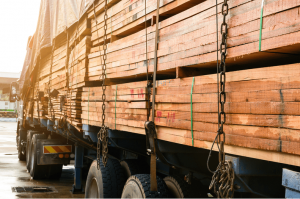Timber: from tree to finished product
Timber!!! Down it comes! The lumberjacks put up their saws and axes to watch the show. It is a magic performance of metamorphosis. After its suspenseful and spectacular fall to earth, the felled tree is no longer a tree: it has already become timber (lumber in USA and Canada).
From tree to timber
Its asymmetric majestic beauty is in harmony with the forest. Its stylish polished beauty is in harmony with the room. Yes, it is the same tree, transformed. Between growing tree and finished furniture comes the work-in-progress part, when the wood is known as timber. Once the tree is felled, it is timber. This name remains, from rough timber to processed timber, right up to the assembly of the finished product. Once down, the tree is immediately cut into planks, beams or logs and transported to the timber suppliers, such as Theo’s Timber Ltd of Manchester who provide professional timber services (supply, consultation, etc) throughout the North West.
Trees
Trees generally need about thirty years to reach full growth. Big, high, mature trees are selected f or timber: the bigger the tree, the higher the yield. Wood/timber is considered one of the most sustainable building materials, so new trees are planted as old trees are cut down, maintaining the tree population stable. Recent statistics from the European Timber industry show that more trees are planted than harvested. Theo’s Timber Ltd, the super-professionals of the timber industry, have these statistics at heart while offering all-round timber supply services.
or timber: the bigger the tree, the higher the yield. Wood/timber is considered one of the most sustainable building materials, so new trees are planted as old trees are cut down, maintaining the tree population stable. Recent statistics from the European Timber industry show that more trees are planted than harvested. Theo’s Timber Ltd, the super-professionals of the timber industry, have these statistics at heart while offering all-round timber supply services.
Wood
In the timber world, there are two categories: hardwood and softwood. This does not refer to the strength of the wood, but rather to the type of tree the wood comes from. Hardwood comes from deciduous trees that lose their leaves in winter, like oak, maple, walnut or cherry trees, whereas softwood comes from evergreens, mostly coniferous trees full of needles, such as pine, perfect for doors or window frames. Both types of wood are used extensively for construction purposes. Hardwood is, as the name suggests, hardy heavyweight construction wood, dark and durable. In contrast, softwood is softer and lighter, also light in colour.
Regulations
Timber is a precious resource and is duly protected. In 2010 the European Parliament adopted a set of obligations for timber suppliers placing timber on the European market. This regulation covers most solid wood products such as flooring, furniture and plywood, and pulp/paper (excluding printed and recycled products). The regulation also applies to imported timber. Its purpose is to prevent the importation of illegally harvested timber. All quality timber suppliers, such as Theo’s Timber Ltd of Manchester, acknowledge and fully comply with all UK and EU regulations.
The end product
Wood of all kinds gets used for making furniture, for building homes or cabins, for making paper. Wood also embodies historic traditions, think of cuckoo clocks or sailing vessels. The more expensive hardwoods are preferable where weather resistance and durability are important, and for areas destined for hard use such as flooring. Homes made from wood have better insulation and lower energy consumption than standard brick houses. Because of its warmth and attractiveness, interior home design includes parts made in wood, as door and window frames, beams, staircases, etc.
Historically, timber has been the key factor in many bold endeavours: from the primitive dugout canoe to the grandiose many-masted galleon, the hardiness, the versatility and the amazing “float-ability” of timber prompted exploration to the ends of the earth and gave us new knowledge, trade and geography.
